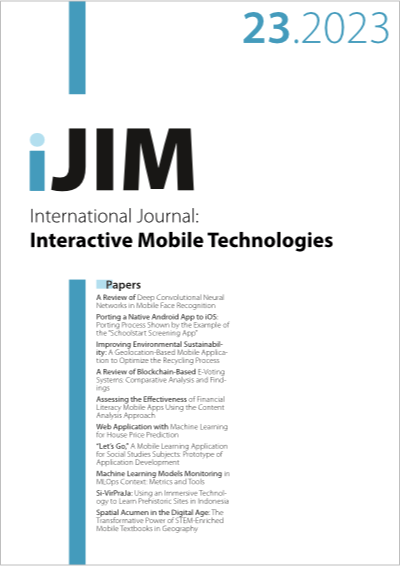“Let’s Go,” A Mobile Learning Application for Social Studies Subjects: Prototype of Application Development
DOI:
https://doi.org/10.3991/ijim.v17i23.43877Keywords:
mobile learning, social studies, prototypeAbstract
The value of social studies learning for junior high school students in several schools still needs to be higher. One of the factors of low student scores is the need for more variety in learning methods used by teachers, low student motivation, and the use of learning media that could be more optimal. One way to do this is to develop a learning model with engaging learning media. This research aims to develop mobile understanding by integrating artificial intelligence at the evaluation stage. The methodology used in this research is the waterfall approach method with requirements analysis, design, implementation, testing, operation, and maintenance. The mobile learning prototype was tested on media experts and junior high school student respondents. The dimensions of expert assessment are reviewed from media appearance, quality and use of media, navigation, product strength, media interface, product attractiveness, and material delivery in the media. The dimensions of questions for students consist of 4 points: content, interface, feedback and assessment, and personalization. The research results show a mobile application’s results, including a brain gym menu, problem identification, materials, discussion forums, assignment results, and quizzes. The menus presented make it easier for students to learn. The questionnaire results from experts show that the highest average is 5.00, with a standard deviation of 0.00. The questionnaire results from student respondents had the highest average of 49.714, with a standard deviation of 0.169. The results of the scores obtained in the expert and student respondent questionnaires show that mobile learning is acceptable.
Downloads
Published
How to Cite
Issue
Section
License
Copyright (c) 2023 Bekti Aprilia, Maria Paristiowati, Muhammad Japar

This work is licensed under a Creative Commons Attribution 4.0 International License.


